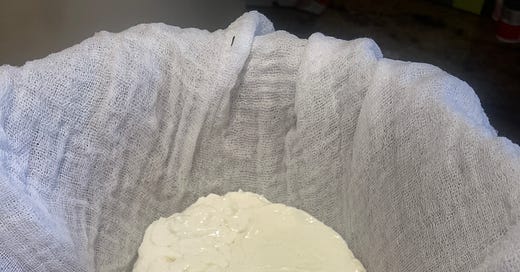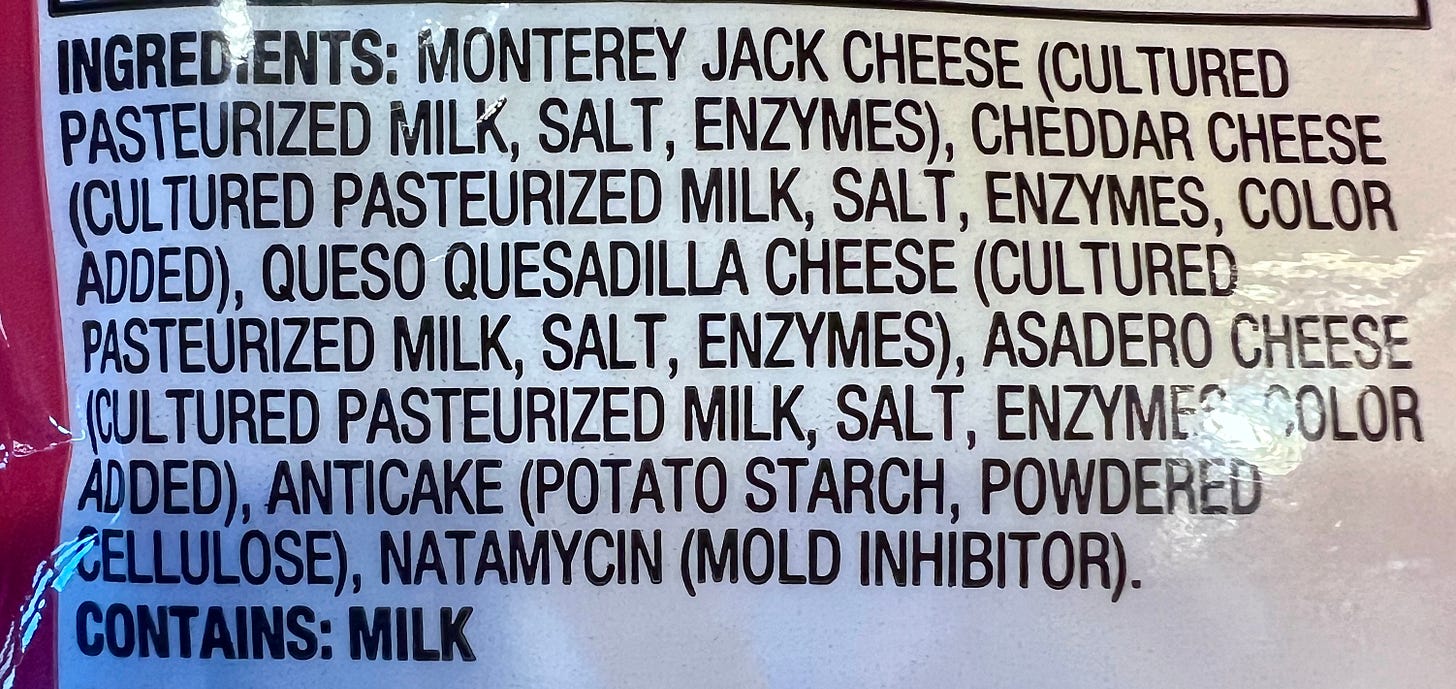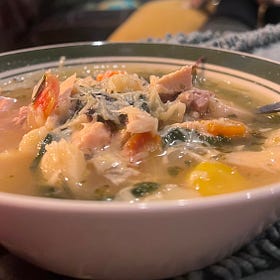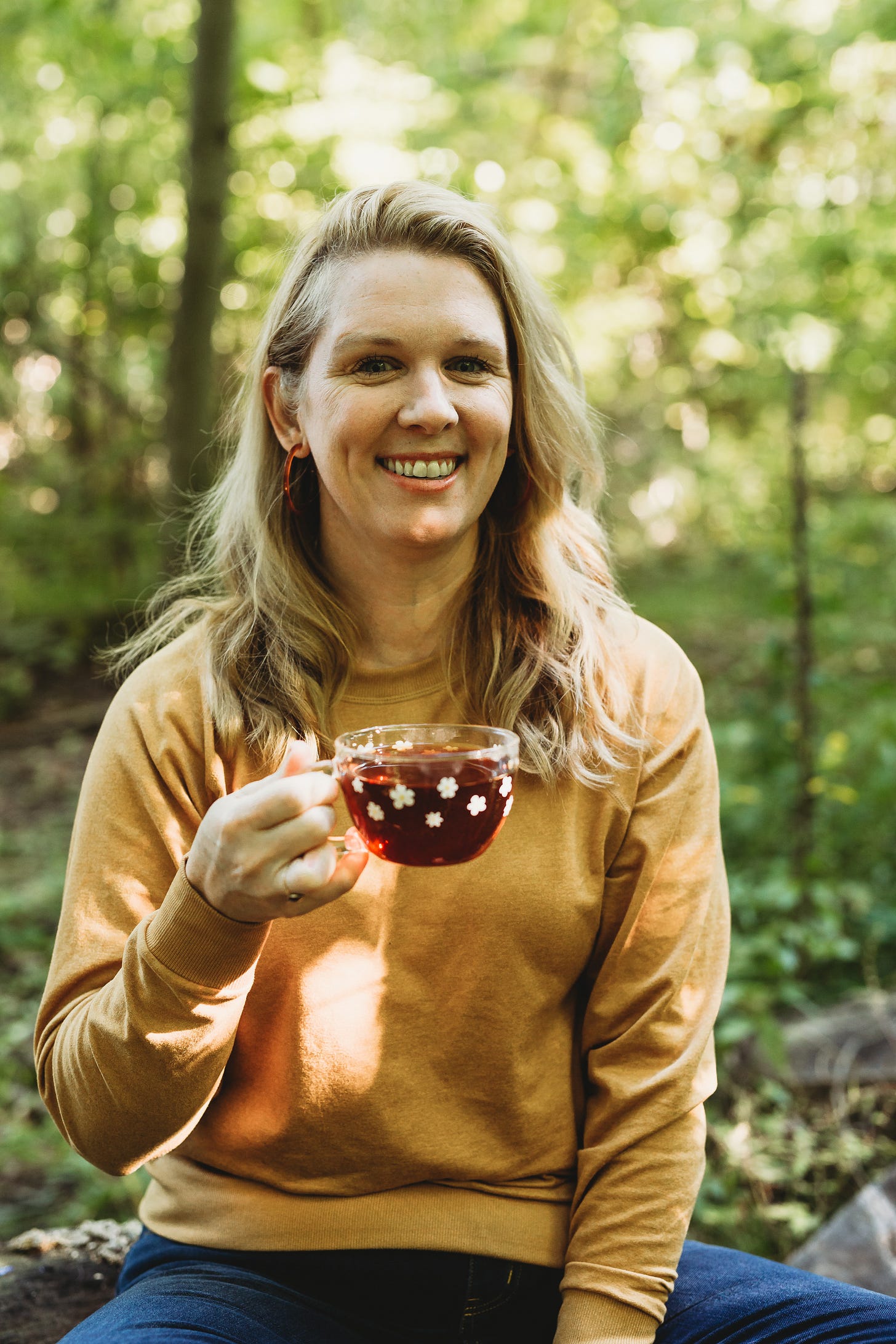The tyranny of shredded four-blend cheese
how we can reclaim kitchen confidence in the face of food marketing
hi friend! This post is free to read, but paid memberships allow me to keep writing. Please consider upgrading if you enjoy this post!
It was the search for “Mexican-Style Four-Cheese Blend” that changed everything for me.
I’d just made a skillet of garlicky, chili-powdered, cumin-spiked ground beef with pinto and black beans, a quick dish that’s a favorite around here because everyone adapts it their own way: Clara puts the mix in a burrito, Eric makes his up taco salad-style, and I grill up some peppers and add cheese and sour cream for a fajita bowl.
After I turned off the burner and opened the fridge, I realized to my dismay that we were completely out of the “Mexican-Style” shredded cheese I thought I’d had stashed in the drawer. I rifled through the fridge, hoping to come up with a reasonable substitute, but came up short: not so much as a block of cheddar to be found.
I went into the bedroom to grab my purse, since it was clear that a trip to the grocery store was needed in this critical moment.
But when I got back, I discovered Eric sitting at the island, happily munching away at a taco salad upon which he had sprinkled blobs of the fresh, homemade goat cheese, my very first attempt at cheesemaking.
I stood there blinking for a moment. But..but… my brain protested; goat cheese isn’t Mexican-Style Four-Cheese Blend! That isn’t the right cheese for taco salad.
Say what, brain?
Obviously, there’s nothing “authentic” about a shredded cheese blend in a plastic bag. But in fact, cheese of any sort was not part of a traditional Mexican diet: when the Spaniards colonized Mexico in the 16th century, they brought dairy animals - and their associated products - with them.
Over time, ancient Mesoamerican dishes were influenced by Spanish preferences - including, yes, cheese - and then also eventually Americanized to boot, leading to the mashup that we modern folk now tend to think of as “Mexican” food.
So, whether or not that blend of Monterey Jack, cheddar, “queso quesadilla” (whatever that is) and asadero cheeses is all that “Mexican” to begin with is debatable.
On the other hand, queso fresco - which has been eaten in Mexican food since the Spaniards brought it over in the late 1500s; maybe not part of a native diet but still pretty traditional at this point - actually bears a lot of resemblance to the fresh homemade cheese that Eric was gleefully gobbling on his taco salad.
Inspired, I threw down my purse and grabbed a bowl. There would be no Mexican Style Four-Cheese Blend in my kitchen that night.
The goat cheese worked unexpectedly well contrasted with the smoky and spicy ground beef, beans, peppers and onions. Tangy and salty, if not the gooey texture I’d been conditioned to expect. And I didn’t have to go to the store: win-win-double-win.
Is it possible to ditch the grocery store?
For most of us, getting groceries automatically equals “going to the supermarket.” But does that brightly-lit jumble of logos, packaging, and confusing nutrition labels have to be the only - or even the primary - way we fill our fridges and pantries?
I think of this experience as one of the “behavioral cusps” so eloquently described in this post by
.But in this case, instead of a “cusp” that led to the adoption a new skill, it was more of a smack-in-the-face realization: I suddenly saw clearly the way my subconscious trust in food marketing had put me in a box (or an eight-ounce bag, as the case may be.)
If you’d asked me outright - and then given time to think over my answer - I would have said that I logically knew there was nothing magically fajita-worthy about Mexican Style Four-Cheese Blend. But when I’m frazzled and overwhelmed, and there’s a product whose packaging confidently assures me that yes, in fact, this product is just the one I need for that tray pan full of nachos, it’s only too easy to toss it in my cart and move on.
And that’s just one example; food marketing is full of it, on packaging and in brand-developed recipes and influencer partnerships. You need this kind of bread for French toast and that kind for grilled cheese. You have to have boneless, skinless chicken breasts, cream-of-whatever soup, or Hellman’s mayonnaise to make that dish. We develop associations between this brand and that dish, and they’re reinforced so often we stop thinking for ourselves; in fact, we forget that we are at all qualified to make our own decisions about what we might like to eat, and how to throw ingredients together in a pot and create something edible.
You don't need a recipe to make soup
Let me start by saying this: I have nothing against recipes. I like them as a source of inspiration, a quick grocery-list cheat, and sometimes, a source of basic cooking information I don’t have at the top-of-mind ready - like how long a specific cut of meat may need to stay in the oven at a specific temperature. And when I’m learning a totally new-to-m…
We’ve become reliant on food marketers to “help” us - not only via the convenience the product delivers, but also the confidence their brand delivers. We don’t even believe we can choose the correct cheese for a specific purposes without being explicitly led to it anymore, let alone make - or even shred! - said cheese ourselves.
Here’s the thing: I’m not a particularly great cook. I am highly distractible, I am impatient, I’m messy and inconsistent. My knife skills are amateur hour, and sometimes I forget to turn the little thingy on the spice jar cap to the right spot and wind up dumping half a bottle in the pot (this is fine when it’s paprika, not so great when it’s chili powder.)
If I spent good money at a restaurant and someone with my abilities made the food that night, I’d probably be disappointed.
But the good news is, I’m not trying to be a professional chef. I’m just a home cook who wants to get a nutritious and pretty tasty dinner on the table with as little fuss and expense - and as few unpronounceable ingredients and corporate manipulation - as possible. For thousands and thousands of years, that was how the majority of people ate the majority of their food. All this “professionalization” of food preparation is a very new invention.
So these days, what I lack in skill I’m making up for in a reckless approach to kitchen liberty. And what’s freeing me up most is learning through experience that all foods are just a combination of ingredients.
Bread, in its most natural state, is just water, salt, and flour. Mayonnaise is just lemon juice, oil, mustard and egg. Cheese is just fermented, coagulated milk, and “Mexican-Style Four-Cheese Blend” is merely a combination of whatever fermented, coagulated milks the manufacturer decided to toss together in a bag and label as such…plus a bunch of stabilizers and anti-caking agents, of course. eesh.
My cheesemaking skills are rudimentary, and so far I haven’t moved beyond making a soft, tangy style of cheese. That’s not always what I’m in the mood for, so I still reach for a Colby Jack or Cheddar - yes, sometimes even the pre-shredded kind with all those questionable ingredients - when I want a melty, gooey, familiarly-bland topping for a plate of nachos.
But it’s nice to know that I don’t need Sargento’s or Kraft’s stamp of approval on my choice of cheese for a specific purpose: I can use what I have, and it’ll be fine.
And if I don’t already have it on hand, with a little time, I can create it myself. The goat cheese Eric and I ate on our respective taco salad and fajita bowl that fateful night is super-simple to make: basically, you let milk curdle naturally into clabber (or force it to curdle with lemon juice), drain out the whey, salt the curds, and voila! You’ve got soft, spreadable cheese.
As it turned out, learning to make the cheese was surprisingly easy. The harder part, was learning to trust that my cheese was good enough to be used in place of the commercially-produced varieties with their slick packaging and official nutrition labels and the reassurance that this one is “Mexican Style” while that one is “Italian.” Learning to trust the part of me that knows what cheese is and understands that I am just as capable of making it as the ancestors who were making it for thousands of years before factory-made cheese overtook home production less than 100 years ago.
Confidence is power. It comes from learning to trust our own innate understanding of what food is and our own ability to source and prepare it. And it’s a product of practice and exposure more than natural skill or cooking talent.
Once we trust our own understanding and ability, we can still choose the Mexican Style Four-Blend Cheese when we want to…but we’ll also know we have other options. We’ll be able to stay home more and make do with what we’ve got, instead of running out to the store at 5:30 PM and spending our hard-earned money on yet another food brand’s proposed solution to a problem we aren’t even sure is real.
And that, my friends, is true kitchen freedom: the kind that can overcome even the tyranny of Mexican Style Four-Cheese Blend.
About me:
Hi! I’m Meagan, an author, podcaster, and midlife mom of five (mostly grown) kids. Here at The Kettle, I share my thoughts on how to live wisely and well in a manic modern world, and I look forward to hearing yours. If you want to connect more deeply, the private chat, including weekly Co-Create Circles and other occasional bonus offerings, is open to paid members. I’m looking forward to getting to know you!











It's so true about the confidence factor that these ridiculously specific products are supposed to inspire in us, but I'm tired of filling my cart with things that have only one purpose. Like my wardrobe, I want my pantry and fridge to be full of flexible, multi-use products that I can get creative with rather than a specific outfit I can only wear in high summer or a cheese blend that can only be used for tacos. I'll take flexibility and freedom over single use products any day!
We had to go dairy-free in my household for awhile, which obviously meant no cheese (and I'm not brave enough to try the fake cheeses). I started putting my homemade guac on burritos and tacos and taco salads, and it was SO FREAKING GOOD that we didn't even miss the cheese. I think the creaminess of the avocado and the saltiness of the guac seasoning made it a great swap. We're eating dairy again, but half the time we don't even use cheese anymore on Mexican dishes; I just whip up some guac instead.